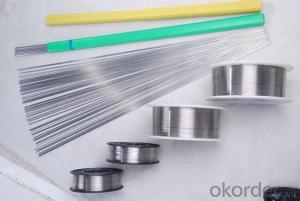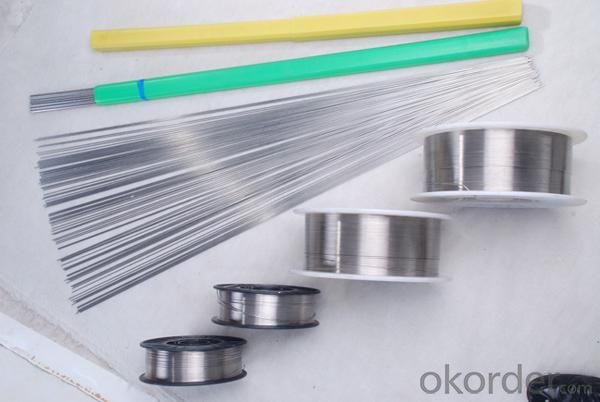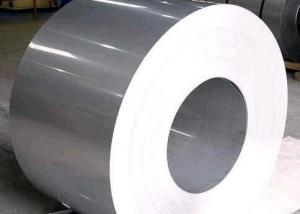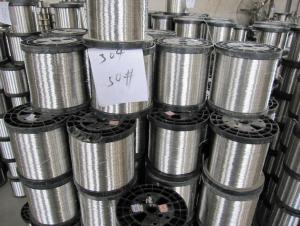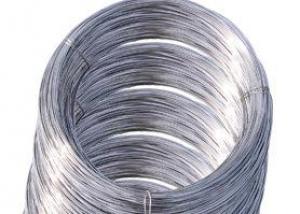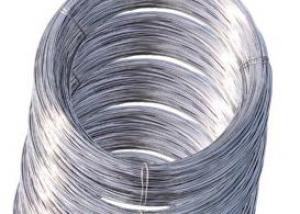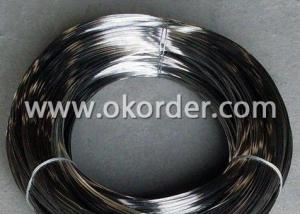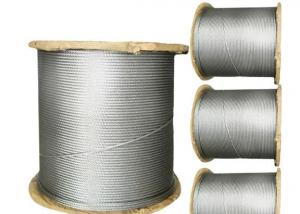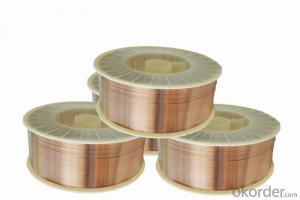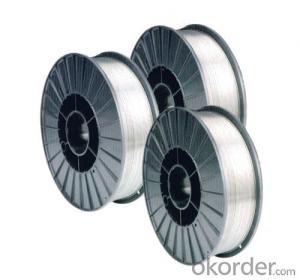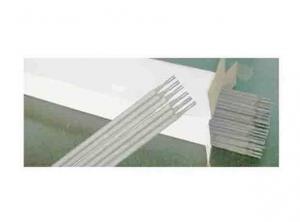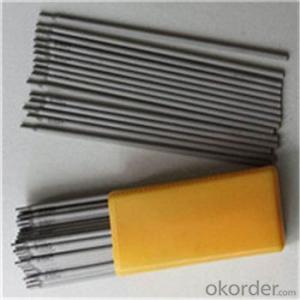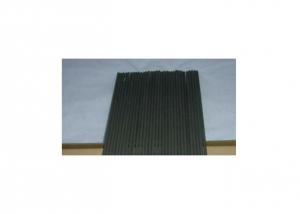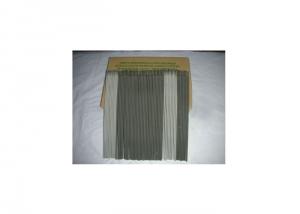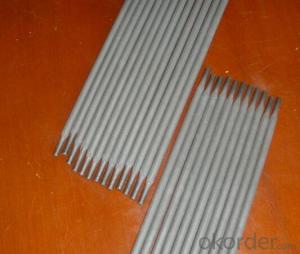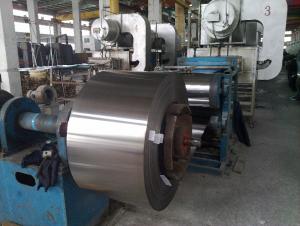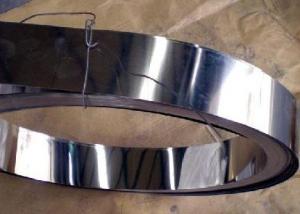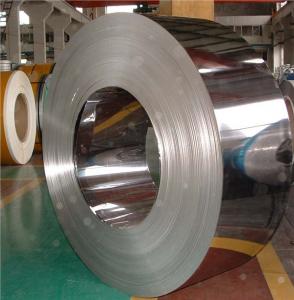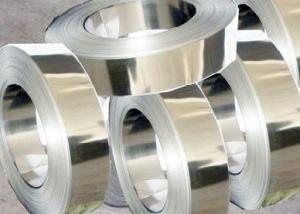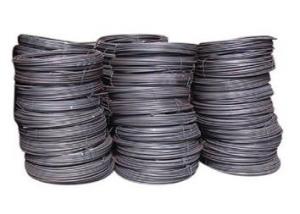Carbon Steel Welding Electrodes AWS E6011
- Loading Port:
- Qingdao
- Payment Terms:
- TT or LC
- Min Order Qty:
- 10 m.t.
- Supply Capability:
- 100 m.t./month
OKorder Service Pledge
OKorder Financial Service
You Might Also Like
Carbon Steel Welding Electrodes AWS E6011
Specifications for Carbon Steel Welding Electrodes
1) Specially for Vertical-down welding
2) Perfect welding performance.
3)Operating current: 2.5MM:30-50,32.MM:70-100,4.0MM:90-140, 5.0MM: 150-200
4)Diameter:2.5mm-5.0mm
5)Material:Carbon Steel
6)Length:300-400mm
7)Delivery Time: 15-30 days after receiving L/C or pre-paid
8)Detail Package:All products will be standard export package, will be wooden boxes or bundled by steel strips, or as per customer's requirement
Advantages for Carbon Steel Welding Electrodes
E6011 is a high cellulose potassium type welding rod for mild steel.
It is suitable for vertical -down welding and lap welding for sheet structures.
Such as smoke pipes, wind pipes ,oil tanks of teansformer, outside cover of vehicles.
Chemical Composition of Deposited Metal(%)
| C | Mn | Si | S | p | Ni | Cr | Mo | V |
| ≤0.2 | ≤1.2 | ≤1.0 | ≤0.035 | ≤0.040 | ≤0.3 | ≤0.2 | ≤0.3 | ≤0.08 |
FAQ
Q: How’s your service?
A:1. Offer customers 24/7 service, whenever you need us, we are always here for you.
2. Immediate response. Your any inquiry will be replied within 24 hours.
3. Support small order quantity, for the first time cooperation customers, we can send you less quantity for trial order.
4. Support third party inspection company to inspect and check the quality and quantity before delivery.
Picture:
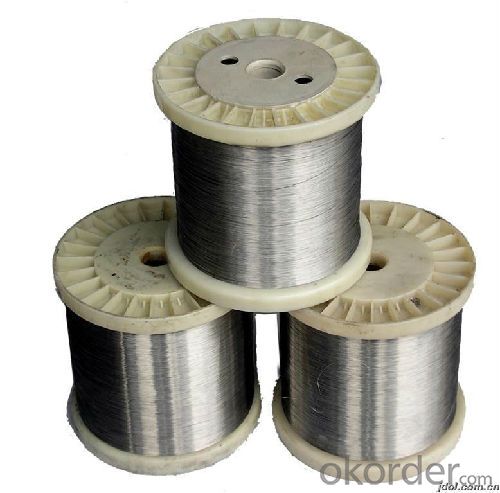
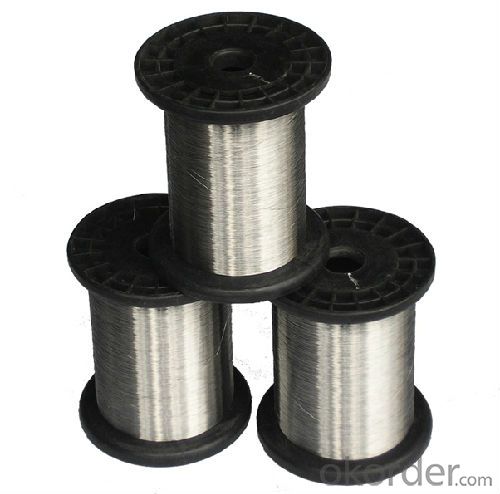
- Q: Can stainless steel wire be supplied in custom diameters?
- Custom diameters of stainless steel wire can indeed be provided. A diverse selection of diameters is accessible for stainless steel wire, allowing for the fulfillment of diverse demands and applications. Manufacturers and suppliers are capable of meeting specific customer requirements and specifications by offering custom diameters. This affords enhanced adaptability and versatility when employing stainless steel wire for a multitude of purposes, such as the production of springs, wire mesh, cables, and other industrial applications. The provision of custom diameters enables the customization of stainless steel wire to satisfy particular strength, durability, and dimensional prerequisites, guaranteeing ideal performance and functionality across various industries.
- Q: What are the different types of stainless steel wire used for suspension bridges?
- Suspension bridges commonly utilize various types of stainless steel wire. These include 304 stainless steel wire, 316 stainless steel wire, and 2205 duplex stainless steel wire. 304 stainless steel wire is a popular option for suspension bridges due to its exceptional resistance to corrosion and versatility. With its composition of 18% chromium and 8% nickel, it effectively combats oxidation and corrosion in different environments. Main cables and hangers in suspension bridges often incorporate this type of stainless steel wire. Another frequently used type for suspension bridges is 316 stainless steel wire. Its composition includes 16-18% chromium, 10-14% nickel, and 2-3% molybdenum, which significantly enhance its resistance to corrosion, particularly in marine and chloride-rich settings. Cables and support structures, which face harsh conditions, often integrate this type of stainless steel wire. 2205 duplex stainless steel wire is a unique stainless steel variant that combines the best attributes of austenitic and ferritic stainless steels. Composed of 22% chromium, 5% nickel, and 3% molybdenum, it exhibits outstanding strength, corrosion resistance, and resistance to stress corrosion cracking. Cables and anchorages in suspension bridges frequently employ this type of stainless steel wire, as it can withstand heavy loads and endure harsh environments. In conclusion, suspension bridges utilize various types of stainless steel wire, including 304 stainless steel wire, 316 stainless steel wire, and 2205 duplex stainless steel wire. The selection of a specific type depends on factors such as the bridge's location, exposure to corrosive agents, and required strength.
- Q: Is stainless steel wire suitable for wire stripping?
- Yes, stainless steel wire is suitable for wire stripping. It is a durable and corrosion-resistant material that can be easily stripped using appropriate tools and techniques.
- Q: Is stainless steel wire suitable for wire rope sheaves?
- Yes, stainless steel wire is suitable for wire rope sheaves. Stainless steel has excellent corrosion resistance and durability, making it a suitable choice for applications that require high strength and resistance to wear and tear.
- Q: What are the different types of stainless steel wire mesh weaves available?
- There exists a variety of stainless steel wire mesh weaves to choose from, each presenting its own distinct pattern and characteristics. Among the commonly utilized weaves are: 1. Plain weave: This weave stands as the most basic and widespread type, where wires interlace in a straightforward crisscross pattern. It yields a sturdy and long-lasting mesh with evenly-sized openings in both directions. 2. Twill weave: By weaving wires in a diagonal manner, this weave produces a noticeable diagonal line effect. Twill weave offers enhanced strength and stability compared to plain weave, making it suitable for heavy-duty applications. 3. Dutch weave: Incorporating a combination of thick and thin wires, Dutch weave results in a tightly-knit mesh with smaller openings. This weave finds common usage in situations requiring fine filtration due to its exceptional particle retention capabilities. 4. Twilled Dutch weave: Combining the characteristics of twill weave and Dutch weave, this weave features a double layer of warp wires, generating a robust mesh with smaller openings in both directions. 5. Reverse Dutch weave: In this weave, the warp wires are thicker than the weft wires. As a result, the mesh possesses larger openings in the weft direction, making it optimal for applications that necessitate high flow rates and mechanical strength. 6. Five-heddle weave: Differing from the conventional two-heddle method, this unique weave employs five heddles. It creates a smooth and flat mesh surface, making it suitable for applications where a uniform appearance is desirable. Each type of stainless steel wire mesh weave possesses its own unique advantages and is selected based on specific application requirements, such as filtration needs, strength, flow rate, and aesthetic preferences.
- Q: What are the different wire surface cleanliness requirements for stainless steel wire?
- The different wire surface cleanliness requirements for stainless steel wire depend on the specific application or industry standards. However, some common cleanliness requirements include removing dirt, oil, grease, or other contaminants from the surface of the wire. This can be achieved through various cleaning methods such as ultrasonic cleaning, acid pickling, or electrocleaning. In addition, wire surface roughness may also be a factor in determining cleanliness requirements, as a smoother surface is often preferred for applications where cleanliness and corrosion resistance are crucial.
- Q: Is stainless steel wire resistant to fatigue?
- Stainless steel wire generally exhibits resistance to fatigue. Fatigue refers to the deterioration or breakdown of a substance when subjected to repetitive or cyclic loads, which can result in the formation of cracks and fractures. Stainless steel is renowned for its exceptional strength and durability, making it less susceptible to fatigue in comparison to other materials. It possesses remarkable mechanical qualities, including elevated tensile strength and resistance to corrosion, contributing to its capacity to endure cyclic loads without experiencing significant fatigue. Nevertheless, it is crucial to acknowledge that the fatigue resistance of stainless steel wire may fluctuate based on factors such as the specific composition of the alloy, the manufacturing process employed, and the conditions in which it is utilized.
- Q: How does stainless steel wire perform in saltwater environments?
- Stainless steel wire, known for its exceptional resistance to corrosion, is an excellent option for use in saltwater settings. The presence of chromium in stainless steel results in the formation of a protective oxide layer on the surface. This layer acts as a barrier, preventing the metal from reacting with saltwater and other corrosive elements, and providing long-term protection against rust and corrosion. Thanks to its impressive resistance to corrosion, stainless steel wire can withstand prolonged exposure to saltwater without experiencing any deterioration or loss of strength. This makes it the perfect choice for various applications, including marine equipment, fishing gear, boat rigging, and coastal structures. Moreover, stainless steel wire is also highly resistant to pitting and crevice corrosion, which are common issues in saltwater environments. These forms of corrosion tend to occur in areas with low oxygen levels or where debris accumulates. However, the protective oxide layer of stainless steel prevents localized corrosion of this kind. Furthermore, stainless steel wire possesses excellent mechanical properties, such as high tensile strength and durability. This ensures that it performs exceptionally well even in harsh saltwater conditions, including strong waves, saltwater spray, and fluctuating temperature and humidity levels. In conclusion, stainless steel wire is renowned for its reliability and outstanding performance in saltwater environments. Its corrosion resistance, combined with its impressive mechanical properties, makes it a popular choice for a wide range of applications where durability and longevity are paramount.
- Q: Can stainless steel wire fasteners be used in corrosive environments?
- Yes, stainless steel wire fasteners can be used in corrosive environments. Stainless steel is known for its high resistance to corrosion due to the presence of chromium, which forms a protective oxide layer on its surface. This oxide layer acts as a barrier, preventing the metal from coming into direct contact with corrosive elements in the environment. As a result, stainless steel wire fasteners are ideal for use in corrosive environments such as marine, chemical, and industrial settings where exposure to moisture, chemicals, or saltwater can cause corrosion.
- Q: What are the different types of stainless steel wire ropes used in oil and gas exploration?
- There are several types of stainless steel wire ropes commonly used in oil and gas exploration. These include 304 grade stainless steel wire ropes, which offer good corrosion resistance and strength. 316 grade stainless steel wire ropes are also used, as they have excellent corrosion resistance, particularly in harsh environments. Additionally, super duplex stainless steel wire ropes are utilized for their superior strength and resistance to corrosion and stress corrosion cracking.
Send your message to us
Carbon Steel Welding Electrodes AWS E6011
- Loading Port:
- Qingdao
- Payment Terms:
- TT or LC
- Min Order Qty:
- 10 m.t.
- Supply Capability:
- 100 m.t./month
OKorder Service Pledge
OKorder Financial Service
Similar products
Hot products
Hot Searches
Related keywords
